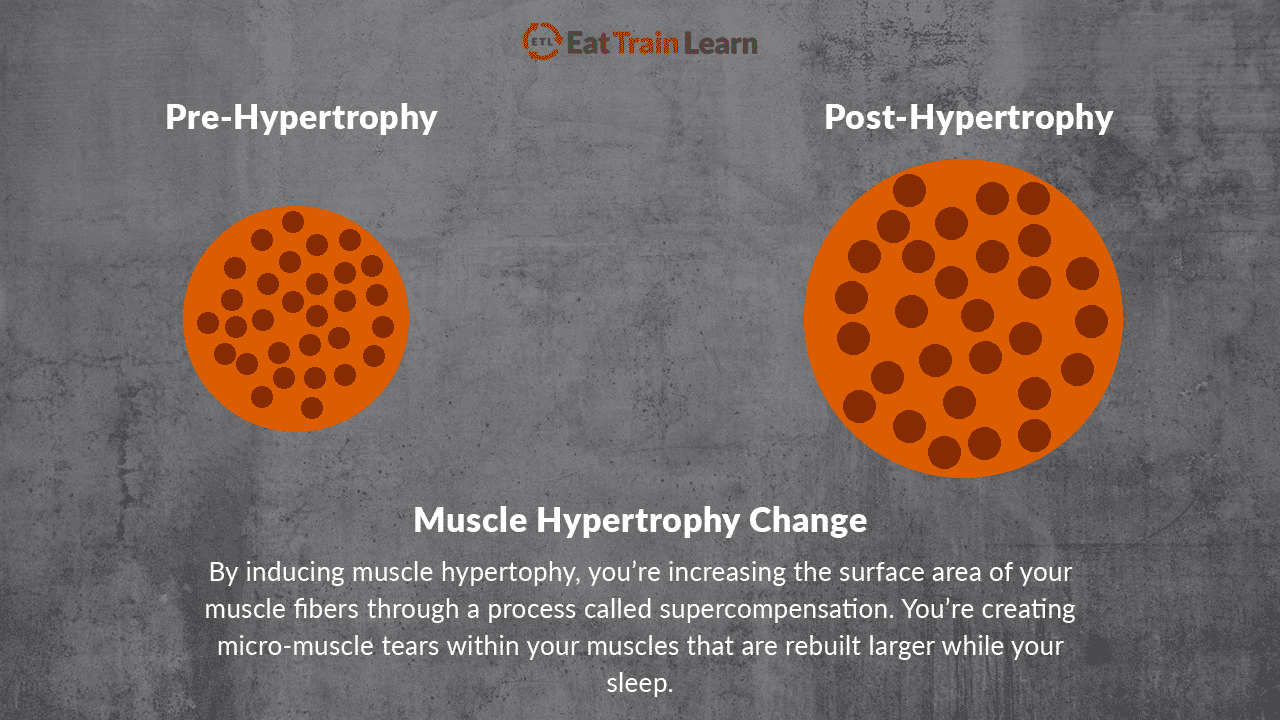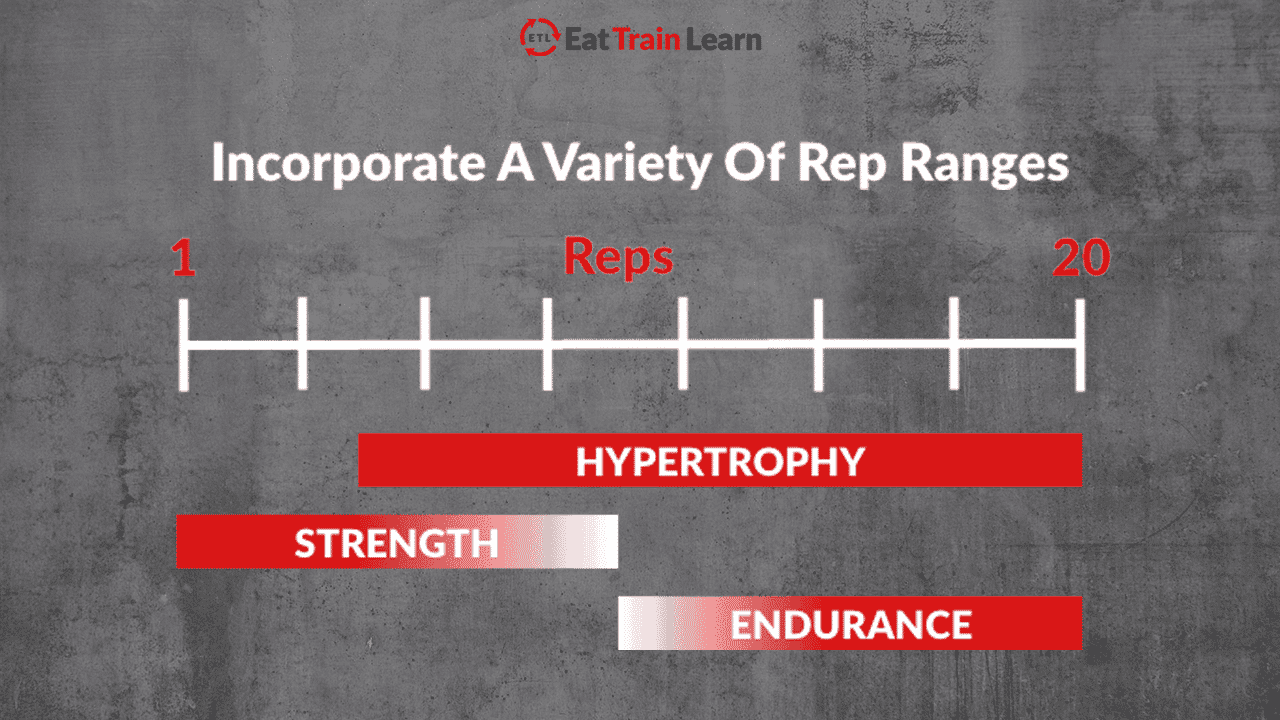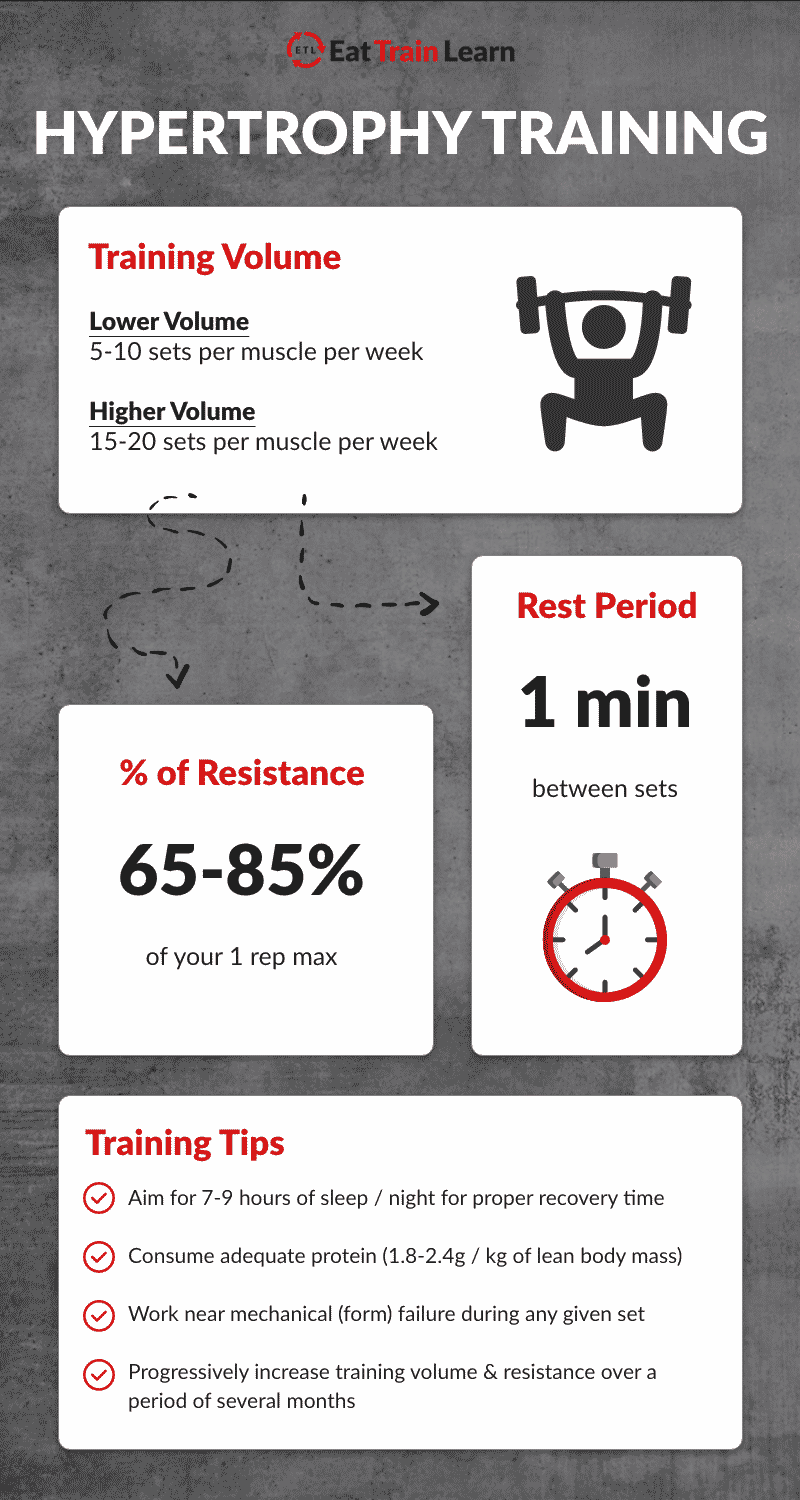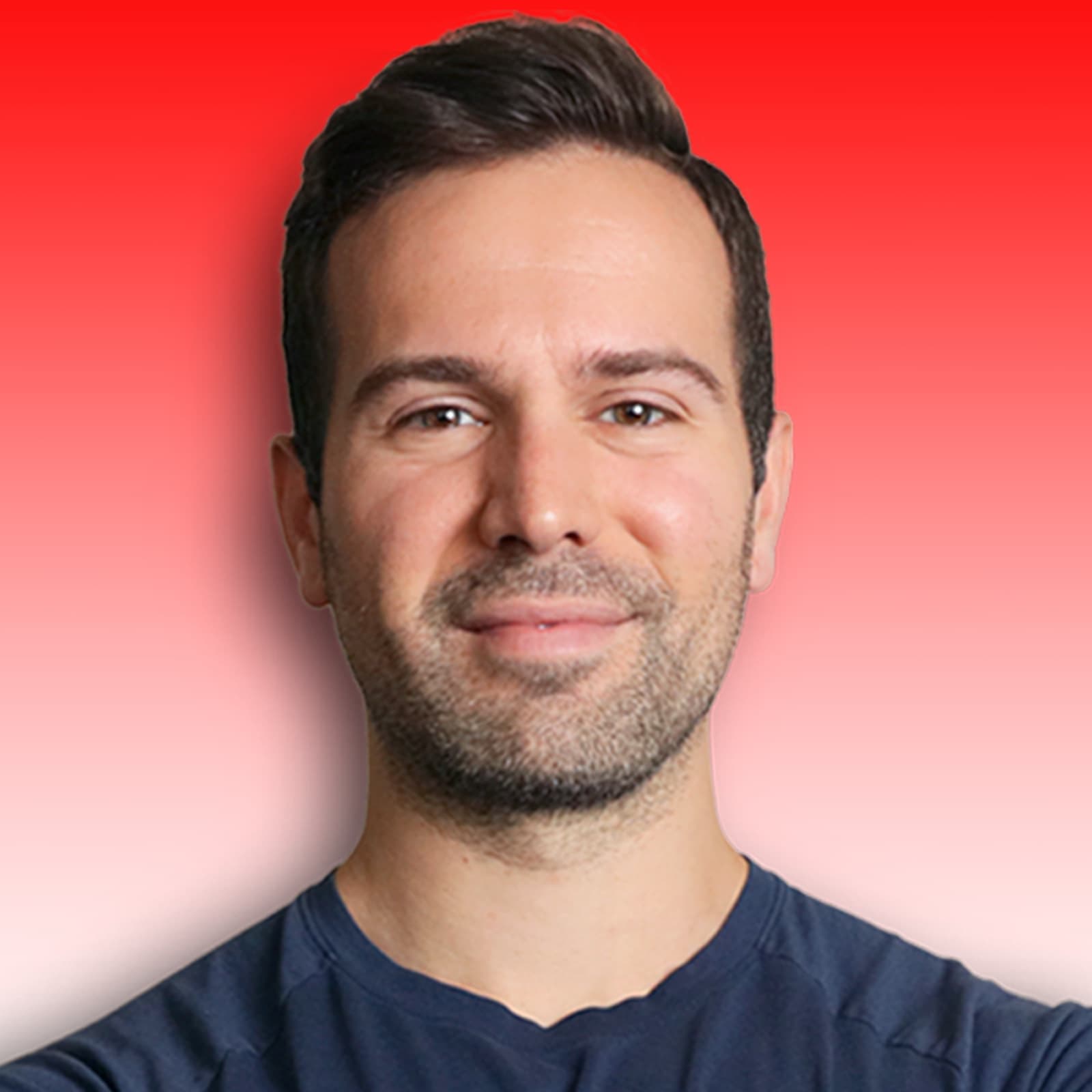Want to maximize your muscle growth? Hypertrophy training is the key!
It’s a workout style focusing on enlarging your muscles, and enhancing both your body composition and strength.
Now, why should you care about any of this?
This post will explain exactly why you should learn, understand, and apply hypertrophy training principles to your workouts if you’re looking to induce some serious muscle growth.
In This Article
- Why Hypertrophy Training Matters for Muscle Growth
- The Benefits of Hypertrophy Training
- Will Hypertrophy Training Increase Strength?
- Should I Train for Strength or Hypertrophy First?
- What’s the Difference Between Training for Strength & Hypertrophy?
- When Should You Train for Hypertrophy?
- How Many Reps (and Sets) Do You Do for Hypertrophy Training?
- Maximize Muscle Growth Using Hypertrophy Training

Why Hypertrophy Training Matters for Muscle Growth
Hypertrophy training applies the principle of progressive overload, efficiently building muscle mass.
It triggers muscle damage and micro-tears, which are repaired during sleep, resulting in larger and stronger muscles.
By focusing on progressive overload within a structured strength training routine, you’ll be able to continue building muscle mass.
The Benefits of Hypertrophy Training
Building muscle tissue is one of the quickest ways to improve your metabolism. When a muscle grows larger, it requires more energy to sustain itself, meaning that you’ll have to eat more food in order to maintain it.
But when you build muscle, your body doesn’t just shed the fat that’s covering it.
Instead, it actually increases your resting metabolic rate (RMR), which is a fancy way of saying how many calories you burn every day when you aren’t working out.
Essentially, this means that you burn more calories even when you’re sitting on the couch or sleeping at night from your increased muscle mass.
Let me be clear – If your main fitness goal is to lose weight then the best way to do so is through a sustainable form of dietary restriction.
This post further explains the impact of nutrition (specifically, flexible dieting) on your overall body composition.
With that being said, here are a few benefits of hypertrophy training that make the most significant impact:
- Hypertrophy training impacts 2 of the 3 variables that influence energy expenditure – your resting metabolic rate and your physical activity
- Building muscle mass through hypertrophy training leads to greater potential for developing maximal strength
- Building muscle tissue increases your resting metabolic rate, which helps you burn calories even when you’re not working out
- Fat-free mass (which includes lean muscle mass) accounts for 65-70% of your RMR
- A training style for all fitness levels that can be performed almost anywhere with minimal equipment
The results of this type of training will not be immediate, but over time (and with proper nutrition) you will notice improvements in your body composition.
Will Hypertrophy Training Increase Strength?
Yes, hypertrophy training enhances your muscle strength by increasing the size of the myofibrils in your muscle. This increased surface area improves your muscle’s ability to resist weight, making you stronger over time (Src).
Bottom Line: By incorporating hypertrophy training (with a structured routine) into your workouts your muscles will grow stronger (and larger) over time as their ability to adapt to your workout resistance improves.
Should I Train for Strength or Hypertrophy First?
In my professional opinion, the answer to this question should be based on your current level of training experience along with your goals.
For example, let’s say your goal is to build muscle mass, have more stamina and get stronger in the process.
Okay, great.
So, the next logical step would be to determine your current level of strength training experience.
Let me explain, you need to develop control of your body which means you need to keep your training intensity tempered at this stage.
The modified routine I’m referring to is focused on stabilization and muscular endurance in this phase. You would keep your resistance/weight lower, moderate reps (12-20 reps per set), and maintain a slow/controlled speed while lifting.
During this phase, your goal is to develop a strong neuromuscular connection so you can have good body control while performing different exercises.
Additionally, as an added bonus you’ll start to develop and instill solid exercise techniques and forms.
This route would make the most sense, assuming you have a strong understanding of the core compound lifts (bench, squat, deadlift, pull-up, and overhead shoulder press) and baseline of muscular endurance.
What’s the Difference Between Training for Strength & Hypertrophy?
Strength training is a style of weight lifting that focuses primarily on lower rep ranges and moderate to heavier resistance.
Studies have shown that it’s best to train at lower rep ranges with heavier resistance (1-5 reps, >85% of your 1 rep max) for superior strength gains.
MYTH: Strength, endurance, and hypertrophy gains only happen within specific rep ranges.
FACT: These different muscular adaptations experience overlap and occur at different rep ranges.
Hypertrophy training is designed to increase your muscle size by overloading your muscles through higher training volume (6-12 reps, 65-85% of your 1 rep max).
Therefore, when it comes to muscle growth, the two most important factors are total training volume and proximity to muscle failure on a given set of exercises.
Below is a good representation of how different adaptions overlap at different ranges.

Both strength training & hypertrophy training overlap (to some degree) when it comes to sets, reps, and resistance specific to muscle growth and strength gains. Overall, it’s best to incorporate a variety of rep ranges to help maximize your strength training results.
When Should You Train for Hypertrophy?
Deciding when to start a specific style of training or workout is pretty simple but we tend to make things overly complex.
If you’re looking to increase your muscle size (and care less about strength) then hypertrophy training is most likely going to be the simplest path forward (for most beginners).
Bottom Line: All in all, there are multiple styles of strength training that can assist in muscle growth & strength gains. What matters most, is clearly defining what your fitness goals are and properly aligning them with a tailored routine for the best results.
How Many Reps (and Sets) Do You Do for Hypertrophy Training?
According to recent studies, using multiple sets with moderate loads (6-12 reps, 65-85% 1RM) and rest periods results in the greatest anabolic response for muscle hypertrophy (Src).

Overall, the mid-range for both load and volume is superior for muscle growth; compared to heavy loads (1-5 reps, >85% 1RM) with long rest periods (2-5 minutes), and light loads (12+ reps, <65% 1RM) with short rest periods (30 seconds).
Maximize Muscle Growth Using Hypertrophy Training
Unlock your muscle growth potential with hypertrophy training. It not only enlarges your muscles but also makes you stronger and can improve your body composition.
Read this next Complete Beginners Guide To Strength Training.

